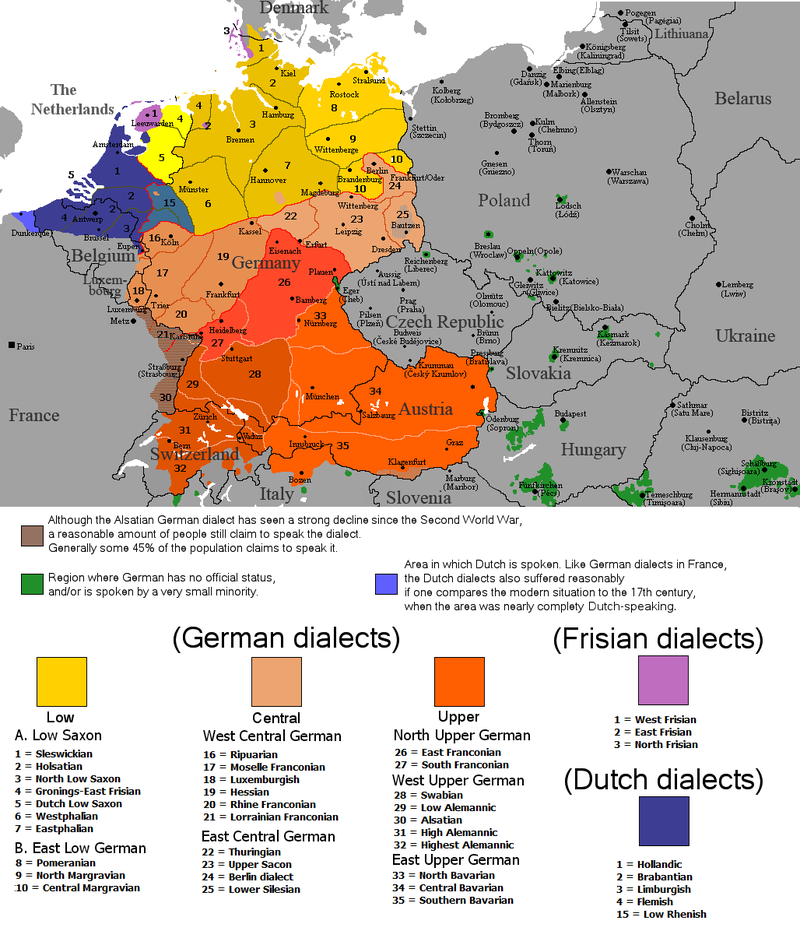The Linguistic Closeness between Dutch and German Languages
The Historical Origins
The Dutch and German languages originated from a dialect continuum spoken across northern continental Europe. There was no clear dividing line between dialects, as the language changed gradually over neighboring regions. West Germanic linguistic heritage became standardized differently in the Low Countries versus central Europe for political reasons. Standard Dutch was based on dialects from the low-lying lands, while standard German incorporated influences from Vienna and Saxony dialects farther south. Over time, enforced language standards created an artificial border where dialects in the northwest frontier regions were arguably closer to Dutch.

Understanding the Modern Similarities
Comparing standard Dutch to standard German reveals changes like grammatical gender reduction in Dutch and retained cases and umlaut in German. However, examining local German dialects reveals many similarities masked by the standards. For example, northern dialects like Plattdeutsch and Bavarian maintain “mögen” as ‘to be allowed’ instead of the standard ‘to like’. Recognizing intermediate dialects clarifies that differences exist more between codified languages rather than the original shared linguistic roots. Even untrained German speakers report grasping more written Dutch due to shared vocabulary and sentence structure.
Grasping Meaning from Written Context
Seeing signs in an unfamiliar language can spark curiosity to discern meaning. One traveler narrated puzzle-solving Dutch phrases like “fietsen verboeden” and deduced the prohibition of “bicycling” from contextual clues. Segmenting unfamiliar words into potential cognates or compound terms aids comprehension. Later, a related sign for “city cycling” confirmed inferences by combining a familiar place name stem with a now understood verb. Though daunting, picking apart written Dutch phrase by phrase enables gleaning basic understanding through Germanic linguistic crossover.
Challenges of the Spoken Languages
While written forms maintain connections, abrupt differences emerge in actual conversation. Listeners educated only in formal High German may fail to comprehend even neighboring Dutch due to distinctive pronunciations. One multilingual individual contrasted comprehending written Dutch and Yiddish more readily than the spoken varieties. Regional influences diverged oral traditions though underlying structures remain aligned. Gaining spoken fluency demands exposures beyond relying on written affinity to decode rapid speech. Functional bilingualism necessitates focused practice in conversational Dutch.
Benefits of Immersive Learning Methods
Alternate approaches can help learners leverage prior knowledge. One Dutch student reversed difficulties by watching television with subtitles, allowing recognition to gradually surpass reliance on visual text cues. Regular exposure through engaging media in a relaxed setting simulates natural language acquisition contexts. With continued input, formerly unintelligible speech can become fluid and intuitive. Additionally, retaining childhood education presented an advantage, demonstrating how maintaining dormant skills primes later development. Immersive learning nurtures latent abilities hidden from purely classroom instruction.
Regional Variation Across Borders
Geographic proximity correlates to degrees of mutual understanding between Dutch and German. Proximity to the border enhances familiarity, so residents of bordering regions usually grasp more of each other’s languages. One noted Northern Germans generally fare better than Southerners. Even unique Swiss German poses fewer obstacles than standardized High German to perceiving written Dutch. Linguistic landscapes transform fluently across zones rather than conforming strictly to political boundaries. Appreciating nuanced clines of regional dialects reveals the seamless historical unity still reflected today along the Dutch-German language frontier.
Conclusion
Standard Dutch and standard German evolved as administrative codifications from a continous West Germanic linguistic spectrum. Varied modern practices partly obscure enduring deep linguistic kinship between the two. However, recognition of substratal connections empower understanding where direct learning proves difficult. Exposure through natural means best sustains development, allowing intuition to reinforce established parallels between these historically interwoven yet politically partitioned language partners.
